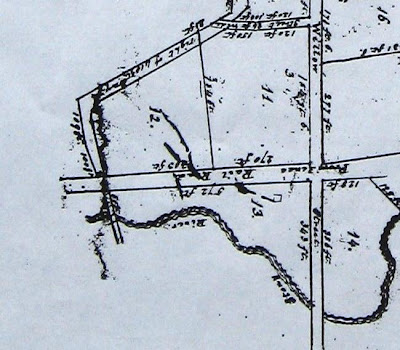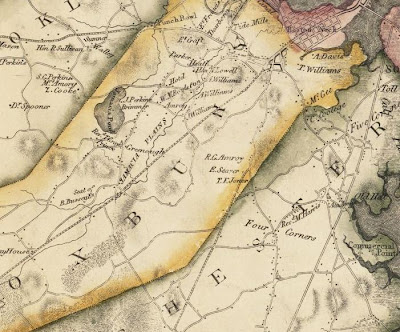 The building with the mansard roof still standing on Green street is the former Pappineau livery stable.
The building with the mansard roof still standing on Green street is the former Pappineau livery stable.A. Papineau, Hack Boarding and Livery Stable Keeper, Green Street, Jamaica Plain, near depot and Washington Street. There is not a better known establishment in Jamaica Plain than that conducted by Mr. A. Papineau on Green Street, near depot and Washington Street, for this gentleman has done business in the vicinity mentioned for a score of years, having inaugurated his enterprise in 1868. In December, 1870, Mr. Papineau removed to his present quarters which were built by him and which were fitted up expressly for the carrying on of his business in the best advantage. Some 21,000 feet of land is utilized and the building is three stories in height, the upper floor being used as a hall for entertainments, etc. The proprietor was born in Canada, but passed nearly all his early life in Vermont, to which state the family of which he was a member removed during the famous Canadian "Landlord Rebellion." The Papineaus were very prominently identified with those opposing the landlord laws, and finally removed from a country where they could not remain with respect. Mr. Papineau gives employment to five men and boards about 30 horses at his spacious stables. His charges for boarding are very reasonable and the animals are assured the best of care at all times. Carriages will be furnished for weddings, funerals and other occasions at the shortest possible notice, and the drivers will be found to be careful and experienced men who are both civil and attentive. Orders by telephone are given immediate attention, and particular credit should be given this establishment for the excellence of its livery service, speedy and stylish turnouts being supplied at any time and at prices as low as can be placed on such accommodations.
Cyrus White & Co., House-furnishing Goods, Hardware, Plumbing, Furnaces, Ranges, Stoves, Drain Pipe and Gas Fittings. Patentee and Manufacturer of White's "Tropic" Furnace, White's Block, Centre Street, Jamaica Plain. The enterprise conducted by Messers Cyrus White & Co., in White's Block, Centre Street, Jamaica Plain, is truly a representative one, and has reached its present leading position after 22 years of active and faithful service. Business was begun in 1866 in a small shop on the lot adjoining that occupied by the fine building now utilized. "White's Block" was erected by Mr. Cyrus White in 1872, and the present store first occupied during the same year, the business being carried on under the name of White & Mayo. The existing style was adopted about 13 years ago and the firm of Cyrus White & Co. is unquestionably one of the best known of any in the trade. Mr. White is a native of Mattapoisett, Mass., and is the patentee and manufacturer of the celebrated White's "Tropic" Furnace. This furnace not only supplies an abundant amount of heat with a small expenditure of coal, but has also made it very "warm" for its competitors, as it would be hard to find an apparatus of the kind that is at once as efficient and simple in its design and as thorough and durable in construction. This furnace is sold and put into working order for a very reasonable sum and those who are dissatisfied with their present arrangements would do well to investigate the merits of the firm at bottom prices, latest and most successful dealt in largely and gas-assistants being employed.
Alan Burke, House and Sign Painter. No. 207 Green Street, near Washington, Jamaica Plain. It is always a safe rule to follow in the placing of orders for work of any description, to employ the best skilled labor you can get at a reasonable price, for although the job you want done may not call for a great deal of skill, still it it better to have it carried out by those who know too much rather than those who know too little, and many annoying mistakes and delays would be avoided were this rule more generally followed. It holds as good in painting as in anything else, and hence we take pleasure in calling our readers' attention to the establishment conducted by Mr. Alan Burke, at No. 207 Green street, Jamaica Plain, for we can assure them that while they can entrust the most difficult orders to Mr. Burke and depend upon having these filled as they should be, they may be equally sure that all due attention and care will be given by him to work of the simplest character. He started in business in Jamaica Plain about thirty years ago, and now occupies premises at the above named address, covering an area of 25 x 50 feet, giving employment to eight experienced assistants. He manufactures an excellent Furniture Polish Renovator which he sells for twenty-five cents a bottle. Painting of all kinds especially house and sign will be done at short notice and at very moderate rates, and attention will be given to the durability of the work accomplished, as well as to its appearance, only the best materials being used and the greatest care exercised in their application.


